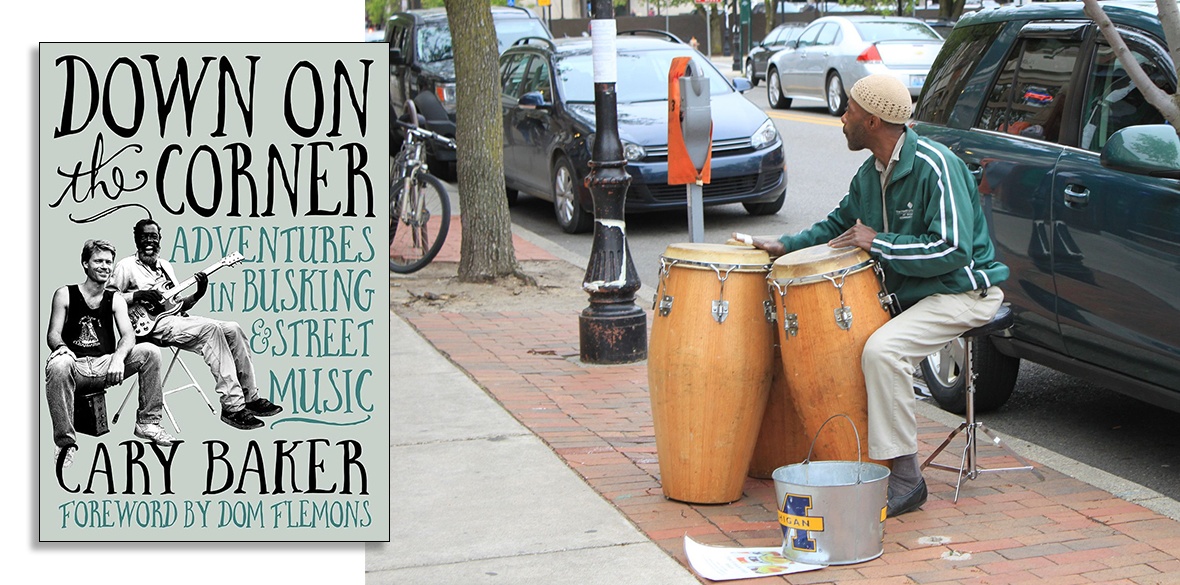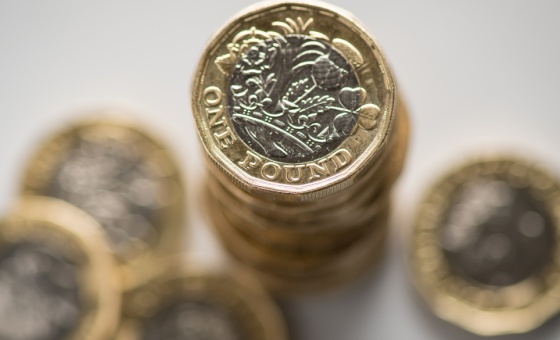This is the last article you can read this month
You can read more article this month
You can read more articles this month
Sorry your limit is up for this month
Reset on:
Please help support the Morning Star by subscribing here
Down On The Corner – Adventures In Busking & Street Music
Cary Baker, Jawbone Press, £16.95
BORN and raised in Chicago, Cary Baker’s interest in street performers was first sparked in 1971.
“My father told me he wanted to take me to Maxwell Street,” he writes, “the decrepit Chicago district at which his parents — Jewish European immigrants — bought, sold, and traded in the 1940s. By the 1960s and ’70s, the neighbourhood was predominantly African-American and a hotbed for blues artists like Big John Wrencher, Walter Horton, Hound Dog Taylor and many more.
“We’d barely parked our car across Roosevelt Road when I heard the strains of a slide guitar played by a street singer named Blind Arvella Gray. We stood there and listened for an hour. I introduced myself, got his phone number, and ended up writing an interview feature on him for the then-brand-new Chicago Reader. They published the piece. Aged 15 my career as a freelance writer had begun.”
Baker then ran a successful Los Angeles music PR company for over 40 years, and in 2022 he moved east “to the desert” — the Josuha Tree/Palm Springs area — to set about becoming a music writer, once again.
Pitching a book about the Venice Beach, California busker Ted Hawkins, the response was an invitation to write about “buskers and street singers — plural!” and he started calling every busker he’d ever heard of: Mojo Nixon, Ramblin’ Jack Elliott and The Violent Femmes. Madeleine Peyroux had busked outside Paris cafes. Certain “superstars” who had busked either did not get back, or declined the offer. Paul Simon, one wonders?
![Saul Smaizys]](https://msd7.gn.apc.org/sites/default/files/styles/inline/public/Moondog%20Saul%20Smaizys%201_0.jpeg?itok=axNuD92_)
Baker takes us through the history of busking from from 1920 to 2022, beginning with the blues and gospel singers who worked the streets of Dallas, New Orleans, New York and Memphis, including Blind Lemon Jefferson, Reverend Gary Davis and hillbilly artists.
When the Depression hit in the ’20s and early 1930s street performing was often the only way to make a dollar for black and white artists alike.
The 1950s saw the rise of doo-wop vocal groups singing on street corners and in subways where they could get a good sound, and might hope to get noticed.
Songwriter Mike Stoller, who co-wrote Stand By Me and Spanish Harlem, says groups practised in the tiled mens restrooms at New York’s music industry hub, the Brill Building which “gave them that good echo.”
In the 1950s and ’60s Moondog, who was blind and who dressed in outlandish costumes performed in Midtown Manhattan. He became a cult figure who recorded albums for Prestige and Columbia and also appeared at Carnegie Hall in 1974, while in Los Angeles in 1968 Wild Man Fischer, a street singer, recorded for Frank Zappa. Fischer was described as “unpredictable” — he thought he was “as good as Paul McCartney” — and recorded albums which he sold to bemused tourists.
Two British artists featured are Billy Bragg who busked in the South Kensington Underground tunnel where he said the acoustics were ideal, and there is a vivid account of Elvis Costello busking outside the Park Lane Hilton at a CBS Records Convention in 1977 which drew a large crowd and which lead to Costello’s arrest!
A wonderful read about a neglected and important part of music history.












